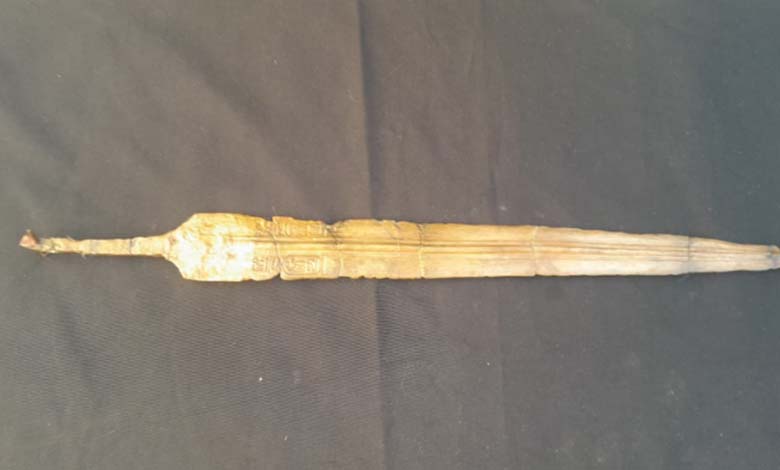Egypt: Archaeological Discovery Includes a Sword of Ramses and Weapon Depots

The Egyptian Ministry of Tourism and Antiquities announced on Thursday a new archaeological discovery, consisting of military barracks and weapon depots, including a sword belonging to Pharaoh Ramses II, in Beheira Governorate.
-
Discovery of the Method Used by Ancient Iraqis to Predict Disasters and Epidemics
-
Libya.. Discovery of 24 unidentified bodies
In a statement, the ministry explained that “the Egyptian archaeological mission affiliated with the Supreme Council of Antiquities uncovered a series of mud-brick architectural units for military barracks, weapon depots, and food storage from the New Kingdom era during archaeological excavations in the Tel Al-Abqain area in the Housh Issa district of Beheira Governorate.”
The statement also highlighted “the discovery of numerous artifacts and personal belongings of soldiers.”
-
Jordan… Discovery of a decapitated body
-
Morocco Announces a Unique Discovery Preserved in Volcanic Ash
The statement revealed that “the mission found a long bronze sword adorned with engravings of Pharaoh Ramses II’s cartouche.”
The mission also uncovered “a collection of artifacts shedding light on the daily activities of the fortress’s inhabitants and their military and religious beliefs, such as war weapons, hunting tools, jewelry, and personal hygiene items, including ivory kohl sticks, beads, scarabs made of red agate and faience, and protective amulets.”
-
Egypt Announces New Archaeological Discovery in Aswan
-
20 Centuries Old: Discovery of Golden Jewelry from a “Mysterious” Culture in Kazakhstan
According to the statement, “one of the most significant discoveries in the fortress is the burial of a cow, symbolizing the qualities of strength, abundance, and prosperity, which the cow represented as a celestial deity, along with two limestone blocks—one bearing hieroglyphic inscriptions of Ramses II’s titles and the other belonging to a worker named Bay.”
Among other notable discoveries, “a faience scarab engraved with the inscription (Amun – Lord of the Sky), topped with a lotus flower, another scarab depicting the deity (Ptah) made of schist, and half a bronze ring bearing an engraving of the deity (Amun-Re), along with two necklaces made of faience and carnelian representing the pomegranate flower.”
Ayman Ashmawy, head of the Egyptian Antiquities Sector at the Supreme Council of Antiquities, stated that “preliminary studies on the discovered artifacts confirm that some of the architectural units were used as storerooms to supply soldiers with daily food and provisions.”
Among the discoveries were “large individual silos containing remnants of large pottery jars used for storage, along with fish and animal bones, and pottery shards. Cylindrical clay ovens used for cooking were also found,” according to the statement.












